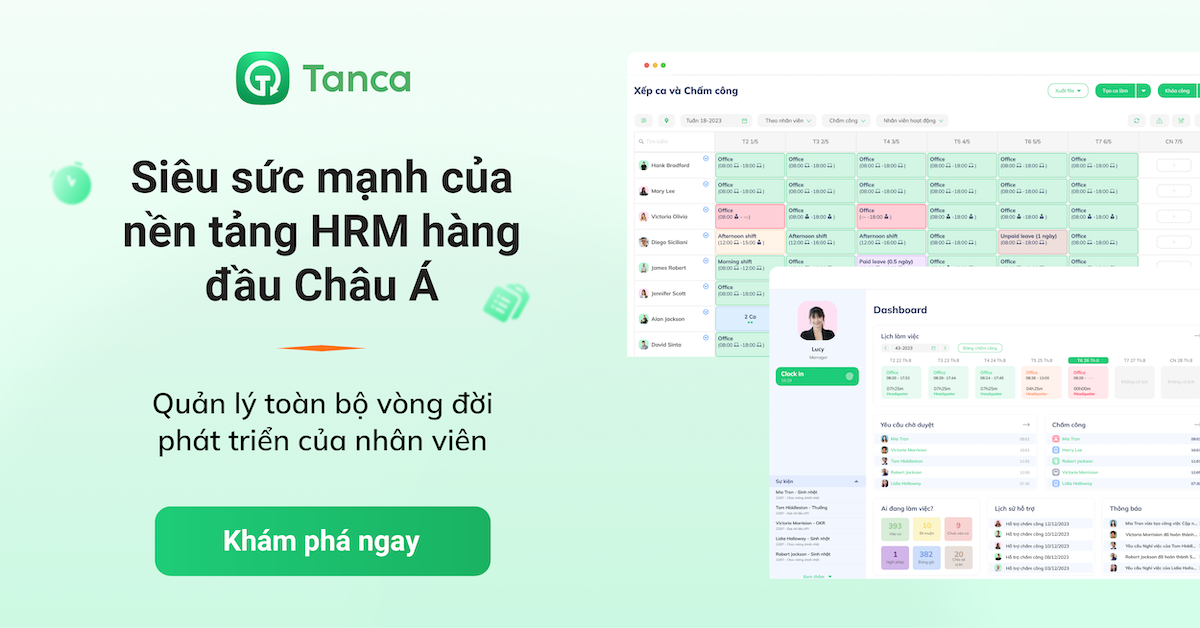How To Conduct HR Investigation? Here are our best guides on how to handle an HR Investigation successfully and create a safe, equitable workplace for all employees.
What is HR Investigation?

Typically, a company starts a human resources investigation when it needs more information regarding a potential employee infraction.
When an employee submits a complaint with your company, the Human Resources department is in charge of conducting an investigation to learn more about alleged employee misbehavior. Businesses in the United States are required by law to examine complaints swiftly and impartially.
It is critical to investigate the complaint because each one has the potential to become a lawsuit. As a result, HR investigations must be taken very seriously in your firm to guarantee that the damaging activities stop quickly.
An immediate response to a complaint will stop internal problems before they become widespread. It will also help the company's reputation as a great place to work.
HR can investigate a few main types of situations in the workplace including Harassment, Unfair treatment, Retaliation, Ethics and Health and security.
| Harassment | Verbal and psychological forms of harassment, such as spreading rumors about coworkers or engaging in gossip, are the most prevalent in the workplace. Harassment persists in the world of remote working via email, virtual meetings, and phone calls. Employees may also face physical or sexual harassment. According to the United States Equal Employment Opportunity Commission (EEOC), workplace sexual harassment or assault is a form of sex discrimination that violates Title VII. |
| Unfair treatment | Following U.S. Department of Labor, unfair treatment is defined as treating a person differently or less favorably... due to their race, color, religion, sex (including pregnancy, gender identity, and sexual orientation), national origin, disability, age (40 or older), or genetic information. |
| Retaliation | EEOC claims that retaliation is the most frequently asserted ground for discrimination in the federal sector and the most frequently identified ground for discrimination in cases involving the federal sector. Reprimanding the employee, transferring the employee to a less desirable position, threatening, spreading false rumors, and so on are common retaliation activities. |
| Ethics | Workplace ethics can be difficult to define, but it generally refers to how employees in a company monitor themselves. Workplace ethics violations can take many forms. It can be as simple as right or wrong, such as stealing or defrauding customers. Other violations, such as misusing company time, can be more subjective. |
| Health and security | The right to a safe workplace is protected by law in a large number of nations, including the United States. This calls for companies to offer safety gear like gloves, harnesses, and helmets as well as chemical protection. Assume you do not follow these rules in the United States. In that case, an employee may file a complaint with the US Department of Labor, Occupational Safety and Health Administration, putting your company at risk. |
Why do you require an HR investigation procedure?

HR investigations are critical in resolving workplace conflicts. Prior to an incident happening, an organization needs to conduct an HR investigation process to show staff that you are concerned about their well-being and that you want to make the workplace a safe place for everyone.
When properly handled, investigations can aid in the protection of a company's interests by spotting wrongdoing and assisting the employer in making decisions that are informed, fair, and impartial.
Last but not least, being able to conduct in-depth investigations aids in your company's defense against lawsuits arising from instances of wrongful termination and other legal matters.
Read more: The beginners guide to human resources
How long does an HR investigation take?

An investigation should be finished between 1-3 business days after the Company receives the complaint. Realistically, witnesses might be unavailable because they're on vacation, ill, or working shifts that change frequently.
However there is no predetermined time frame for workplace investigations, and they can take a few days to several months. To ensure that relevant evidence and facts are not lost, the investigation should begin as soon as HR becomes aware of the issue.
(Documents, factual witness statements, recorded Zoom calls, or surveillance videos.)
How To Conduct HR Investigation?
You need to have a standard procedure with clearly defined steps in place if you want to conduct fair, impartial HR investigations.
Let's take a look at how these steps might work in practice. Immediately after receiving a verbal or written complaint, the employer should take the following steps.
Step 1. Guard the accuser or complainant
Depending on the nature of the complaint, HR may need to take immediate action to protect the accuser or complainant.
For instance, if the complainant and the accused work closely together, you might need to temporarily suspend them both until the investigation is complete, modify their work schedules, or separate them from the other employees involved in the complaint.
Allegations of harassment or sexual harassment, in particular, necessitate prompt but discrete resolution. It is crucial to remember that not all the information is available at this point in the process, so any actions taken must not be viewed as the final judgment.
Step 2. Select suitable investigator
You must select a lead investigator for the investigation. Legal counsel or a member of the HR department's internal team may serve in this capacity, but they cannot be connected to either the complainant or the accused. It is crucial that the investigator act impartially and fairly in order to gather the relevant evidence.
Some businesses will already maintain a list of suitably qualified investigators from which they can select in order to respond quickly to complaints.
When a case is more complicated or involves senior staff members, other organizations may hire outside investigators to assist.
All of the following should be available to the appropriate investigator:
- The ability to conduct objective, bias-free research.
- There is no vested interest in the outcome. The investigator shouldn't be close friends with any of the parties involved. The investigator's status within the company shouldn't be directly impacted by the results.
- Prior investigative experience and thorough understanding of labor laws are required.
- Strong interpersonal skills are necessary to establish a rapport with all parties and to be seen as impartial and fair.
- Pay attention to the details.
- The right temperament for interviewing.
Each type of investigator has particular benefits and drawbacks that can be considered:
| Benefiits | Drawbacks | |
| Personnel in Human Resources | HR is the most popular option. Due to their superior interpersonal abilities, HR representatives have an advantage over other departments because most employees find them to be trustworthy and comfortable. HR must also be able to maintain objectivity, be acquainted with the employees, and be knowledgeable about the organization and employment laws. | Employees may view HR representatives as biased in the investigation because they too closely equate them with organizational management. Additionally, if the HR specialist has a close personal relationship with the involved employee, management might object (s). |
| Interior safety | These experts frequently have training in investigative techniques that enable them to gather data from sources that a less experienced investigator might overlook. | Internal security officers may be perceived as intimidating by employees. As a result, may become less productive due to their training and assertive demeanor. Additionally, they might not have as much experience with employment law. This would limit their capacity to assess. |
| Third-party investigators who are not lawyers. | They are more frequently used when an employer lacks an internal employee with the required credentials or the time to carry out the investigation or if the accused is one of the senior leaders in the company. They can offer objectivity. | |
| In-house and outside legal counsel investigators | These investigators face ethical and legal issues. Legal counsel investigators. Outside counsel provides intellectual honesty to the investigation but is unfamiliar with the employer's culture and employees. In-house counsel is familiar with the company's culture and employees. | Employees may feel intimidated by in-house and outside counsel, which may limit their willingness to be honest and open. |
| Team approach | Teams bring a wealth of experience, resources, and ideas. A good team, which is frequently comprised of an outside attorney and HR, typically fills all internal and external gaps that would be brought about by a single investigator. The team approach allows for collaboration if the accuser, accused, or witness changes his or her previous statements. |
Step 3. Make an investigation plan
To determine the validity of the complaint, the investigator must first develop an investigation plan.
This will include a description of the issue(s), a list of witnesses to be contacted, evidence that must be gathered and analyzed, workplace procedures or policies legal records, and a rough estimate of the investigation timespan.
Take into account any supporting documentation that has already been provided to you, such as emails or the employee who filed the complaint's account of what transpired, before proceeding.
Then consider what additional information you will require to make a decision and devise a strategy for gathering it.
Never forget that maintaining confidentiality is crucial when carrying out a workplace investigation.
Step 4. Prepare the questions list
You'll need to interview the accused employee, the complainant, and any witnesses. In order to learn more about the events, prepare your target interview questions ahead of time.
You can use a variety of interview question models to probe for the truth during the investigation interview process. Here are a couple of examples:
Who will you be questioning?
Although you shouldn't feel compelled to speak with every employee at your company, your investigation should be sufficient in depth to give you the necessary amount of information to make a decision.
Tanca advises you to avoid making your investigation so thorough that it undermines morale, lowers productivity, or disseminates more details than it obtains.
What questions will you pose to HR investigation witnesses?
Once you've decided who you'll interview, don't go in empty-handed or as if they're all the same. Make sure your questions are tailored to respect the interviewee's feelings, relationships, and access permissions—that is, what they need to know versus what they are allowed to know—in order to help you get the information you need.
What records and documents do you need to compile?
You might think about asking for evidence like emails, written warnings, reviews from the accused employee's supervisor, personal files, or documentation that the accused employee was informed of company policies. One reason why maintaining up-to-date, well-organized employee records is crucial is because of this.
In Section V of their investigation interview guides, the EEOC provides sample questions.
Tanca also has more tips for making this questions list in the next section, keep reading!
Step 5. Carry out the Interviews
To obtain and examine important facts, the investigator should be neutral and objective. It is critical to avoid pushing the research in any specific direction.
The investigator should never express a viewpoint or say anything to interviews that would call his or her impartiality into question. Every interview must be conducted objectively.
Making notes, checking for contradictions, looking for chances to gather additional evidence, and looking for names of additional prospective witnesses should all be taken into account.
In order to find inconsistencies, ask the employee to write down what transpired. The information provided in the interview and what the employee is ready to put down may differ.
Employee credibility must be determined by investigators. Interviews reveal varying and even contradictory accounts of the events. Keep in mind that the matter is very personal for the employees concerned.
Step 6. Gather information
Due to the need for both physical and digital evidence, as well as witnesses, gathering information and documentation will take up the most time during the inquiry. Digital evidence must be verified and kept in a secure location, and all physical evidence must be kept in a secure location.
Each phase of the investigation should be documented. The final investigation report includes a summary of all the stages of the investigation, interviews, evidence, and final conclusions and suggested next steps.
It is vital to note that the investigator simply offers a recommendation based on the findings of the investigation. They do not make disciplinary decisions.
Depending on the scope of the inquiry, you must evaluate relevant workplace policies & identify any legal concerns as well as the benefits and drawbacks for the wider firm.
Step 7. Evaluate data and make a conclusion
Now that you have a desk piled high with interview notes, complaints, emails, and other supporting documentation, you're prepared to assess the data you've gathered.
You should take into account all relevant factors, any legal repercussions (another excellent opportunity to consult with your legal team), as well as the possible impact your choice will have on the business and your staff.
The investigation is finished at this point. Instead, based on the report, the decision-maker will determine what action is appropriate as well as if disciplinary action is required. If your conclusion differs from the study's recommendations, make sure to include the reasons why in the report like an appendix.
Step 8. Make a report
If your company policy dictates that an action be taken against an employee as a result of your decision—whether it's a written warning, probation, termination, or something else—that action should be delegated to a pre-selected and separate team to make a final decision.
This might be a member of your executive team, legal advisor, or someone purposely excluded from the investigation to protect their objectivity.
Prepare a summary report containing all of your data and your suggested course of action to present to this group. You should also identify the business's benefits and drawbacks, talk about any potential legal repercussions, and explain why you believe that this is the best course of action in your report.
The following information should be summarized in the final report:
- The investigation of the occurrence or concerns, including dates.
- Parties concerned
- Key factual and believability results, with sources cited.
- Employer policies or standards, as well as their relevance to the investigation
- Conclusions that are specific.
- The party (or parties) in charge of making the final decision.
- Issues that could not be fixed and the reasons for this.
- Employer actions have been taken.
The purpose of the record is to guarantee that if a court, jury, or government agency were to evaluate it, the reviewers would decide that the employer took the problem seriously, responded promptly and appropriately, and had a documented better foundation for any measures taken during or as a result of the inquiry.
Read more: How To Run Payroll Checklist?
HR investigation questions
During a workplace investigation, as previously said, you might question your colleagues about some extremely sensitive subjects.
Tanca recommends investigators to remember that workplace inquiries are uncomfortable for everyone involved, especially the individuals who brought up a problem. And they are difficult for those who are conducting the inquiry and being asked to cooperate.
HR Investigation Questions Tips
- Ask wide-ended inquiries that allow employees to share their entire experience to encourage them to open up.
- In order to avoid misinterpreting any element of a witness's testimony, ask clarifying questions.
- Avoid asking leading questions.
- Maintain your cool and avoid making accusations, disguised threats, suggested rewards, or any other type of intimidation/coercion.
- Look for both information they provide and information they avoid providing.
- Take thorough notes.
HR Investigation Questions Example
Your questions can make or ruin your investigation. It can be difficult to avoid asking leading questions or putting words in the employee's mouth, but these techniques can taint the inquiry from the start. Here are 12 crucial queries to get your investigation going in that context:
- Who is the alleged perpetrator?
- How did it happen?
- What occurred?
- When did this happen? Is it still going on?
- Where did this occur?
- Did you express your displeasure to the accused?
- Who else could have saw or heard this?
- Have you reported it to someone or discussed it with them? If so, who, when, and why did you inform them?
- What impact has this had on you?
- Does any physical or digital proof support this claim?
- Do you have any more information that could help with this investigation?
- What are you hoping the company will do?
Frequently Asked Questions
How do most HR investigations end?
In the majority of HR inquiries, no substantial disciplinary actions are required in the end. To justify, say, an immediate firing or demotion, it typically takes a lot of strong proof.
What triggers an HR investigation?
When a company requires more information regarding alleged employee wrongdoing, it will usually launch a human resources inquiry. These investigations must be fair and in accordance with all state, federal, and municipal laws.
Are HR investigations confidential?
Following its ruling in December 2019 that secrecy rules during workplace investigations are presumptively acceptable, the National Labor Relations Board (NLRB) recently ruled that employers can advise employees to keep an ongoing internal inquiry confidential.
What is involved in an HR investigation?
Your HR and legal teams may opt to pursue more evidence based on the results of your interviews. Watching surveillance footage, checking pc hard drives,reading work emails, or evaluating other pertinent material could all fall under this category.
Wrap up
It's a good idea to check in with the person who filed the complaint to see if they are satisfied with the inquiry's outcome, even if it might not be a formal step in your HR investigation methodology.
After an investigation is complete, go back to the HR investigation process & look for any holes that can be filled or ways to improve employee policy training so that perhaps there will be less investigations in the future.
Your HR investigation's findings may not suit everyone. Making decisions can be tricky. However, as long as you behave in good faith, you should be confident that you have safeguarded your employees' and your company's interests.
Thank you for viewing the article. If you have more questions about HR Investigation, please comment below, Tanca will respond as soon as possible.









